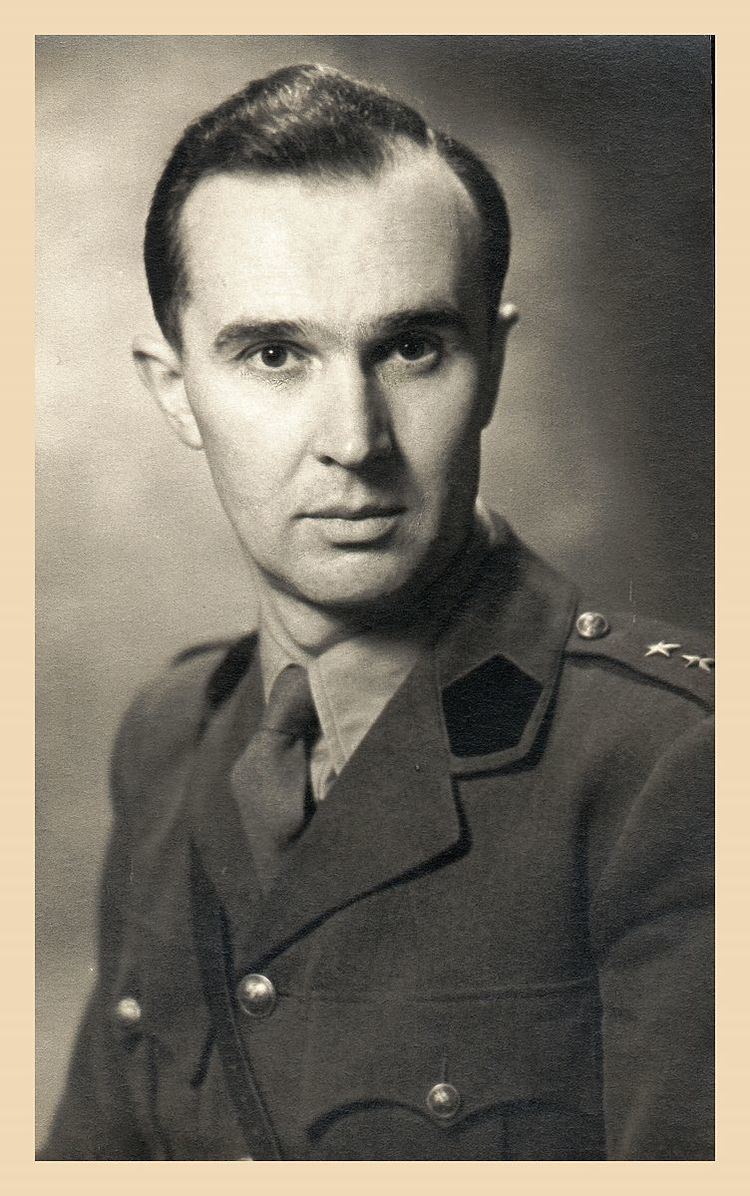Name Waclaw Struszynski | ||
Wacław Struszyński (1904–1980) was a Polish electronics engineer who made a major contribution to the defeat of U-boats in the Battle of the Atlantic. He solved the problems of the design of a complex radio antenna, which enabled effective high frequency direction finding systems to be installed on Royal Navy convoy escort ships. Such systems were referred to as HF/DF or Huff-Duff.

He was born in Moscow in 1904, and the family moved to Warsaw in 1916. He qualified as Dipl. Ing. at the Warsaw Institute of Technology in 1928, and joined the Polish State Telecommunication Establishment, where he became head of the Direction Finding Division. When Poland was invaded in 1939, he was evacuated from Warsaw, and reached England in 1940.
In World War II, the U-boat 'wolf-packs' were organised by high frequency radio in which long range communication was achieved by the reflection of radio signals from the ionosphere. German radio signals were decoded at Bletchley Park in England (termed Ultra intelligence), and when this revealed the intentions of the U-boats, convoys could be routed to avoid them. However, the convoys always had to be prepared for possible attacks.
There was an urgent need for convoy escort ships to know the bearings of U-boats, by determining the direction of their radio transmissions. However, the technical problems of realising a seaborne direction finding system were severe in comparison to those of a land based system, mainly due to the very detrimental effect of unwanted radio signal reflections from the ship's superstructure.
A vital aspect was the design of the seaborne direction finding antenna. In England, Struszyński joined the staff of HM Signal School (later called the Admiralty Signal Establishment), and in a very short time, he not only proposed a solution to the problem of reflected signals, but also introduced 'sense' into the antenna, to distinguish between radio signals arriving from the correct direction to those offset in direction by 180 degrees. Having proposed these solutions, he led a team that developed a practical antenna, which enabled effective high frequency direction finding systems to be installed on Royal Navy convoy escort ships.
In his authoritative book 'Hitler's U-Boat War: The Hunted, 1942–1945', the American naval historian Clay Blair Jr. refers to Struszyński's achievement of antenna design as "a breakthrough of transcendent importance." He also states that "The popular rush to credit radar, and later codebreaking, for the defeat of the U-boat left the equally effective but less glamorous and more difficult to understand Huff-Duff in the shadows."
The Germans considered that the technical problems of seaborne radio direction finding could not be adequately solved. Therefore U-boats continued to use their high frequency radios, revealing their bearings to convoy escorts. An escort ship could then steer in the direction of a U-boat, forcing it to be defensive, and possibly destroying it. Alternatively, Allied aircraft could be advised of the bearings.
Enigma historian Ralph Erskine ('Military Communications: from ancient times to the 21st Century') states, "An operational research report based on Ultra estimated that without shipborne high frequency direction finding, Allied convoy losses in early 1943 would have been 25 to 50 percent higher, with U-boat kills being reduced by one-third."
Also, the German naval historian Jürgen Rohwer ('The Critical Convoy Battles of March 1943') concludes, after examination of official British and German records, and many lengthy discussions with the wartime Commander of U-boats, Karl Dönitz, "If we analyse the great convoy battles between June 1942 and May 1943—including both those operations which the Germans regarded as successful and those which ended as either minor successes or failures—the remarkable fact is that the outcome always depended decisively on the efficient use of high frequency direction finding."
Rohwer also notes that, during the war, the Germans, being unaware of seaborne high frequency direction finding, concluded that their U-boat failures were due to Allied radar developments. Thus German records stress the relevance of radar, and not of seaborne HF/DF. Both radar and HF/DF (and ASDIC) were vital electronic techniques in the defeat of the U-boats, but HF/DF had the advantage of being able to determine the bearing of a U-boat at a range far greater than seaborne radar could achieve.
Struszyński subsequently worked at the Marconi Research Laboratories, Great Baddow, England, where he was a consultant in communications research until his retirement.
Effective Royal Navy seaborne HF/HF was made possible by his exceptional antenna design. It is regrettable that this wartime achievement is not sufficiently recognised, particularly as Churchill stated that "The only thing that ever really frightened me during the war was the U-boat peril." An account of the work on HF/DF at HM Signal School is given by Redgment, who worked with Struszyński during and after the war, and details of the antenna are described by Struszyński et al., and by Bauer.
The father of Wacław Struszyński was Professor Marceli Struszyński, a member of the Polish resistance, who analysed the fuel used in the V2 rocket, the formula being subsequently sent to England.
